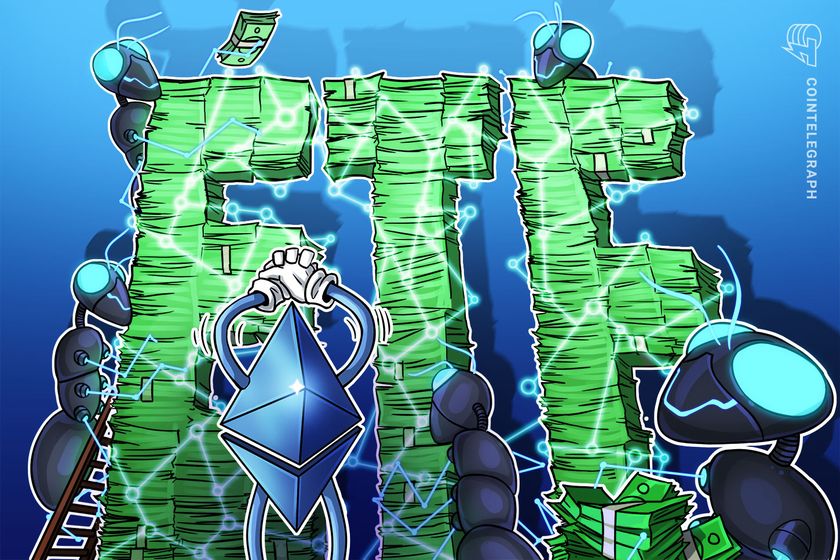What is an atomic swap, and how does it work?

Exchange cryptocurrency securely on different blockchains using atomic swaps. It’s either a swap or a no-swap, ensuring crypto funds’ security.
Atomic swap vs. bridge
Atomic swaps enable P2P exchange, while cross-chain bridges provide a connection between blockchains for the transfer of assets through tokenized representations.
While both cross-chain bridges and atomic swaps enhance blockchain interoperability and serve the purpose of transferring crypto coins across various blockchains, they function in different ways. Cross-chain bridges serve as a connection or link between multiple blockchain networks. They act as intermediaries that facilitate the transfer of assets between these networks.
Cross-chain bridges necessitate the burning or locking of a token before its availability on a different blockchain. A wrapped token is created, and an equivalent amount is made available within a liquidity pool on the target chain. These wrapped tokens can then be transferred, traded on the target blockchain, or redeemed for the original assets on the source blockchain.
Cross-chain bridges are becoming popular thanks to their ease of use and good user interface and are viewed as a modern, accessible way to swap cryptocurrencies on separate blockchains.
Can atomic swaps be tracked?
Atomic swaps are designed to ensure user anonymity so that their identities are not exposed.
As opposed to CEXs, atomic swaps do not require KYC. Atomic swaps themselves are designed to be trustless and private, meaning they aim to ensure that the transaction details and participants’ identities are not directly exposed.
However, it is important to note that the underlying blockchains used in atomic swaps, such as Bitcoin and Litecoin, are public ledgers where transactions are recorded and visible to all. While the atomic swap transaction itself may not be easily distinguishable from other transactions on the blockchain, the individual transactions involved in the swap can still be tracked on their respective blockchains.
To further enhance privacy, participants can use additional techniques such as coin mixing or privacy-focused cryptocurrencies. Coin mixing involves obfuscating the transaction history by combining multiple transactions to make it harder to trace the funds. Privacy-focused cryptocurrencies, like Monero (XMR) or Zcash (ZEC), offer built-in privacy features that can be utilized in conjunction with atomic swaps to enhance anonymity.
Disadvantages of atomic swaps
Atomic swaps can be technologically complex, with higher blockchain wait times resulting in slower adoption rates.
Atomic swap disadvantages include:
Complexities with trade swap
Atomic swaps necessitate the exchange of data, information and hashed cryptographs. This can be daunting for beginner traders.
Lack of fiat-crypto on-ramp
For traders who wish to liquidate to fiat, this can be challenging because fiat-to-crypto and crypto-to-fiat exchanges are not possible on atomic swap DEXs.
Currently, few platforms support atomic swaps. In addition, one might require specific programming skills and hash knowledge to utilize atomic swaps. Nevertheless, cryptocurrency wallets will likely integrate this technology into their software in the future.
Advantages of atomic swaps
Atomic swaps improve blockchain interoperability and reduce risks while providing traders with greater flexibility at a lower cost.
Atomic swap benefits include:
Fully decentralized nature
Atomic swaps offer traders the advantage of decentralization. Peer-to-peer trading grants autonomy on one’s funds and independence from CEX platforms or a centralized liquidity pool.
Enhanced security
The hashlock and timelock mechanisms in the self-executing smart contracts used by atomic swaps provide traders with a higher level of security. Traders have the certainty that their cryptocurrency will be returned in the event of delays or conflicts.
Interoperability and altcoin trade flexibility
Atomic swaps enable the swap for users on different blockchains. Many CEXs do not allow traders to swap all sorts of altcoins. Atomic swaps solve this problem by allowing practically all forms of altcoins to be swapped.
How do atomic swaps work?
Atomic swaps work by utilizing smart contracts and hashlock cryptographic techniques to secure digital asset exchanges.
“Atomic” is a term used to describe processes that either conclude successfully or do not initiate at all — there is no other alternative. An atomic swap for crypto trading implies only two possible outcomes: Either the trade is successfully executed, or no action occurs.
In simpler terms, an atomic swap creates a mechanism where both sides of the cryptocurrency trade must satisfy all predetermined conditions before the trade can be finalized. This is achieved through the implementation of smart contracts, which are self-executing programs designed to enforce the conditions necessary for a transaction to be successful.
Atomic swaps utilize hashed time lock contracts (HTLCs), which are a form of smart contract, to enable secure and trustless exchanges of cryptocurrencies. HTCLs, in essence, “lock” a transaction and demand that both parties verify the information before the exchange can proceed.
Atomic swap smart contracts have two essential components:
Hashlock
The hashlock mechanism allows the contract to be locked with a unique cryptographic key that can only be generated by the cryptocurrency depositor. This key, which is a unique data piece, ensures that the swap is only finalized when both parties approve the transaction.
Timelock
The timelock mechanism is like a deadline for the swap. It ensures that the transaction is completed within a certain amount of time, and in the event it does not happen, it returns the depositor’s funds. Timelock essentially helps secure the transaction. Both parties must approve the swap within the specified time limit or else the transaction gets aborted and the crypto is returned to its respective owners.

History of atomic swaps
Atomic swaps, also called cross-chain atomic swaps, were theorized in 2013 but gained practicality post-2017.
In July 2012, Sergio Demián Lerner, a developer, produced the initial version of a trustless exchange protocol. However, a full working paper was given in 2013 by Tier Nolan, who is widely acknowledged as the pioneer developer of atomic swaps due to his comprehensive description of the atomic swap procedure.
In 2017, the concept saw its first actualization when Charlie Lee, founder of Litecoin, tweeted the historic moment of the completion of the first successful atomic swap. He successfully performed a cross-chain atomic swap involving LTC/BTC, where he exchanged Litecoin (LTC) for BTC.
Ever since this milestone, numerous DEXs and swaps have been leveraging this technology to create new cryptocurrency trading solutions. Popular DEXs and networks that support atomic swap trading include AtomicDEX, the Lightning Network, Liquality and others.
The importance of atomic swaps
Atomic swaps enable DeFi and solve the inefficiencies associated with exchanging cryptocurrencies within centralized finance (CeFi).
To exchange Ether (ETH) on the Ethereum network and Bitcoin (BTC) on the Bitcoin network, one can follow the steps below while using a CEX, such as Coinbase or Binance:
- Registering an account on a centralized exchange platform that supports the ETH/BTC trading pair. This may require a sign-up process and a KYC mandate, as per the CEX’s policy.
- Transferring ETH to the centralized exchange.
- Converting ETH to BTC, which may involve incurring transaction fees and, sometimes, a long waiting period.
- Withdrawing the acquired BTC to a Bitcoin wallet, which may involve additional fees.
- Lastly, patiently waiting for the exchange’s processing and the eventual arrival of funds.
This typical CEX exchange presents a series of steps, uneconomical fees and multiple possible complications. Additionally, CEXs can introduce unanticipated security risks related to asset custody. CEXs store user funds in custodial wallets, and the exchange retains control of the private keys. In the event of a security breach, hack or regulatory withdrawal freeze, the user’s cryptocurrency could be exposed to potential threats.
To solve these problems, DeFi and DEXs enable atomic swaps, which eliminate the need for intermediaries in trading, streamline the process, and significantly reduce numerous potential security risk points for cryptocurrency users.
Related: How to mitigate the security risks associated with crypto payments
Understanding atomic swaps
Atomic swaps remove intermediaries and centralized control, thereby making cryptocurrency exchanges more decentralized.
Atomic swaps enable peer-to-peer (P2P) transactions between individuals with different cryptocurrencies on two separate blockchains, eliminating the requirement for an intermediary (such as a centralized exchange). Atomic swaps allow users to exchange digital assets as per self-executing smart contracts.
Centralized exchanges (CEXs) deliver a trading experience resembling traditional stocks and fiat trading — provide asset liquidity, manage trading pairs and order books, ensure fair market prices, and connect buyers and sellers on a platform. They are custodial and exert centralized control as they have access to user private keys.
CEXs are popular with high trading volumes, but they are contravening the decentralized ethos of cryptocurrency and blockchain. This is where decentralized exchanges (DEXs) seek to embody a noncustodial infrastructure. Atomic swaps enable greater interoperability across various blockchain networks. They enable decentralized multichain cryptocurrency exchange fostering a true decentralized finance (DeFi) ethos.









